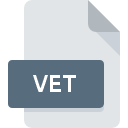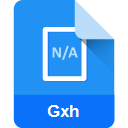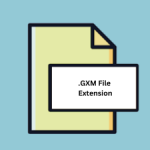.VET File Extension

What is an VET file?
The .VET file extension is primarily associated with Lectra Cutter, a leading software solution utilized in the fashion and textile industries for pattern making, grading, and cutting.
These files are integral components of the digital workflow, containing vital information necessary for the accurate cutting of fabrics and materials.
More Information.
The .VET file extension was introduced to address the need for a standardized format that could seamlessly integrate with Lectra Cutter and other related software applications.
Its primary purpose was to encapsulate geometric data, cutting parameters, and other relevant information essential for fabric cutting machines to execute precise patterns with minimal material wastage.
Origin Of This File.
The origins of the .VET file extension can be traced back to Lectra Systems, a French company founded in 1973 by Daniel Harari.
Lectra revolutionized the garment industry with its innovative CAD/CAM solutions, enabling designers and manufacturers to streamline their processes and enhance productivity.
As part of Lectra’s suite of software tools, the .VET file extension emerged as a standard format for storing pattern data and cutting instructions.
File Structure Technical Specification.
.VET file is a structured document that contains a combination of vector graphics, metadata, and machine instructions. It typically comprises elements such as:
- Geometry Data: This includes the outline of pattern pieces, seam allowances, notches, and other design details represented as vectors.
- Cutting Parameters: Information regarding cutting speed, knife pressure, and other parameters necessary for the cutting process.
- Material Specifications: Details about the type of fabric, grain direction, and any special instructions relevant to the cutting operation.
- Machine-specific Commands: Commands tailored to the particular model of the cutting machine, ensuring compatibility and optimal performance.
The technical specifications of the .VET file format may vary depending on the version of Lectra software used to create it. However, it generally adheres to industry standards to facilitate interoperability and compatibility across different systems.
How to Convert the File?
Converting .VET files to alternative formats may be necessary to facilitate interoperability with non-Lectra software solutions or accommodate specific workflow requirements.
While direct conversion tools for .VET files are scarce due to their proprietary nature, several approaches can be explored:
- Export to Common Formats: Lectra Cutter may offer functionality to export .VET files to more universal formats such as DXF (Drawing Exchange Format) or SVG (Scalable Vector Graphics), which can be further processed or converted using third-party software.
- Intermediary Conversion: Utilize intermediary software capable of importing .VET files and exporting them to desired formats. However, this approach may introduce potential data loss or compatibility issues.
- Custom Development: In cases where standard conversion methods prove inadequate, custom development of conversion utilities or scripts tailored to the specific requirements may be warranted, albeit at a higher cost and complexity.
Advantages And Disadvantages.
Advantages:
- Efficiency: By encapsulating all relevant information in a single file, .VET streamlines the communication between design and production teams, reducing errors and improving workflow efficiency.
- Accuracy: The precise geometric data contained within .VET files ensures that fabric cutting machines execute patterns with high accuracy, minimizing material wastage and optimizing resource utilization.
- Versatility: .VET files can be easily modified and manipulated using Lectra software, allowing designers to iterate on designs quickly and efficiently.
Disadvantages:
- Dependency on Specific Software: .VET files are primarily compatible with Lectra software, which may limit interoperability with other CAD/CAM systems.
- Learning Curve: Mastering the intricacies of Lectra software and .VET file manipulation requires training and experience, which can be a barrier for newcomers to the industry.
- File Size: Complex designs and intricate patterns may result in large .VET files, which can pose challenges in terms of storage and transmission.
How to Open VET?
Open In Windows
- Lectra Cutter: Install and launch Lectra Cutter, the primary software designed to work with .VET files, on your Windows system. Once installed, you can directly open .VET files within Lectra Cutter.
Open In Linux
- Wine: Use Wine, a compatibility layer that allows running Windows applications on Linux systems. Install Wine on your Linux machine, then install Lectra Cutter through Wine and open .VET files within the virtual Windows environment.
Open In MAC
- Virtualization: Employ virtualization software such as Parallels Desktop, VMware Fusion, or VirtualBox to create a virtualized Windows environment on your macOS system. Install Lectra Cutter within the virtual machine and open .VET files as you would on a Windows system.
Open In Android
- Remote Desktop: Utilize a remote desktop application like Microsoft Remote Desktop or TeamViewer to connect to a Windows computer where Lectra Cutter is installed. Access Lectra Cutter remotely and open .VET files on your Android device.
Open In IOS
- Remote Desktop: Similar to Android, use a remote desktop app like Microsoft Remote Desktop or TeamViewer on your iOS device to connect to a Windows computer running Lectra Cutter. Open .VET files remotely from your iOS device.













